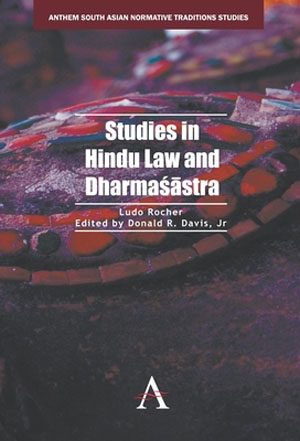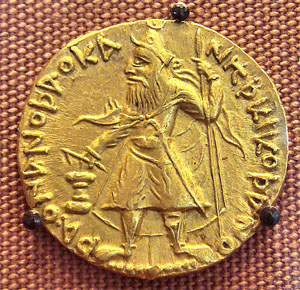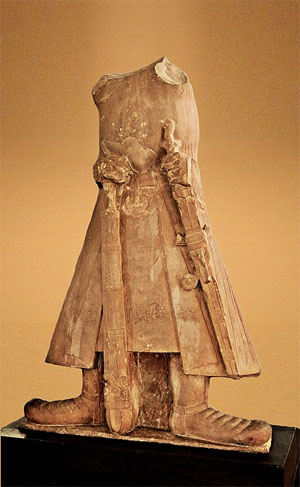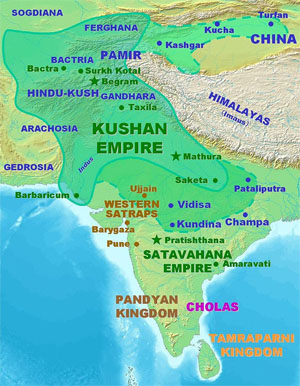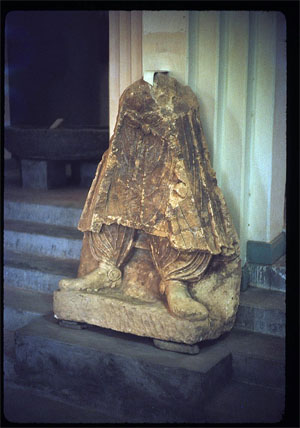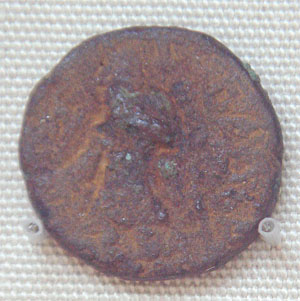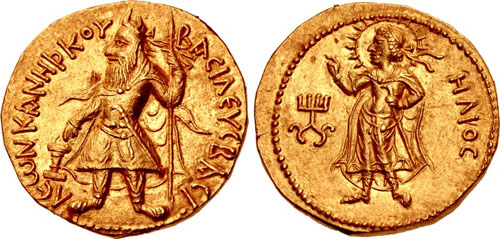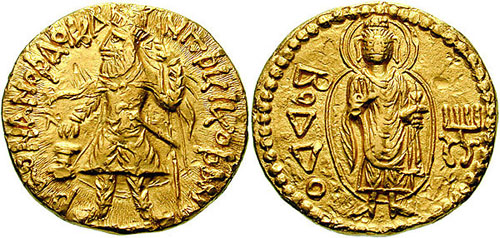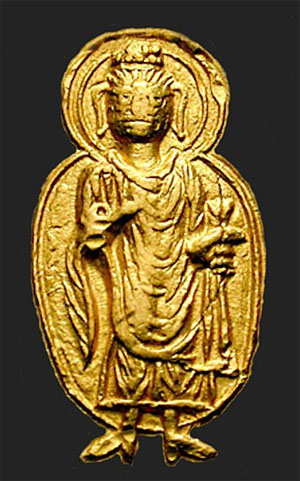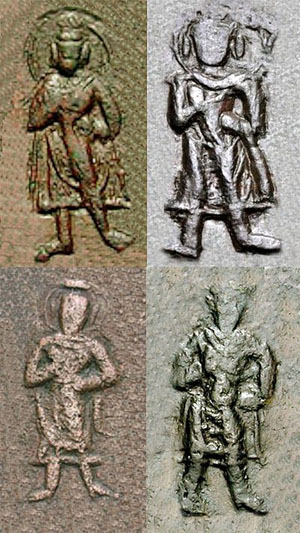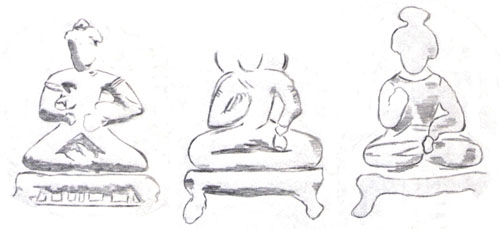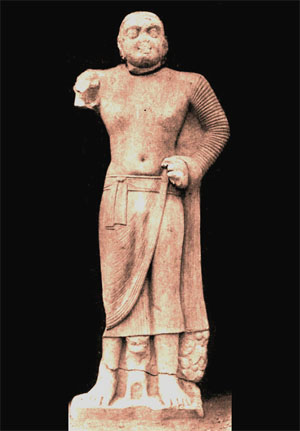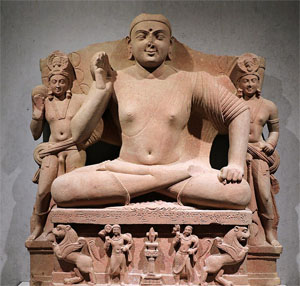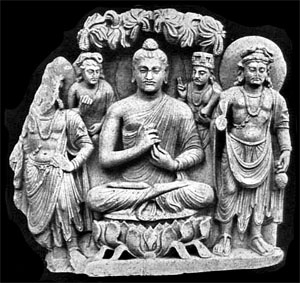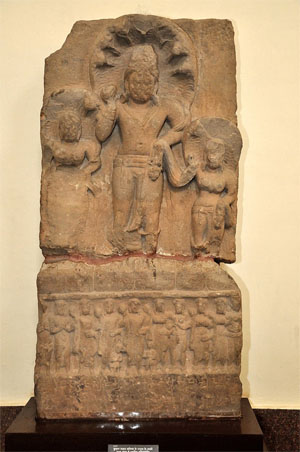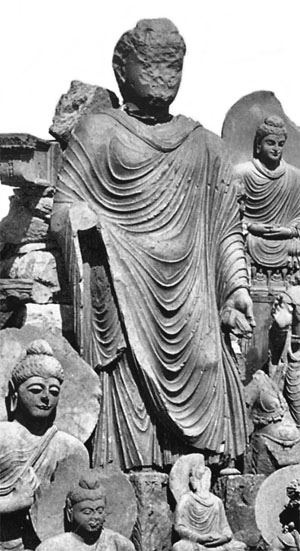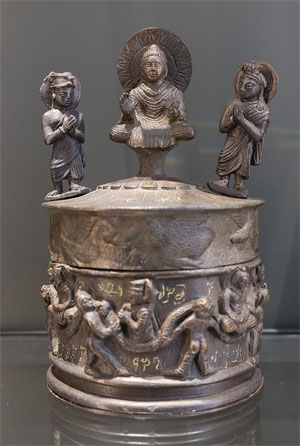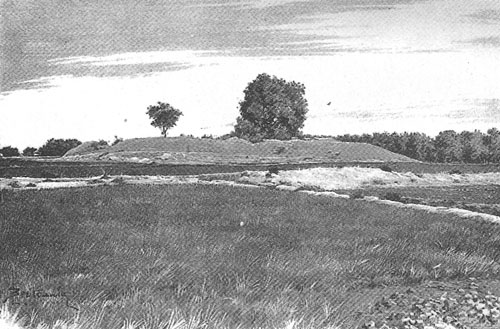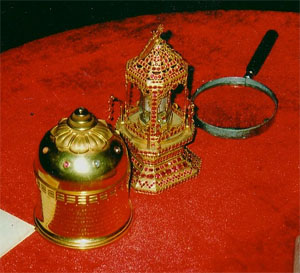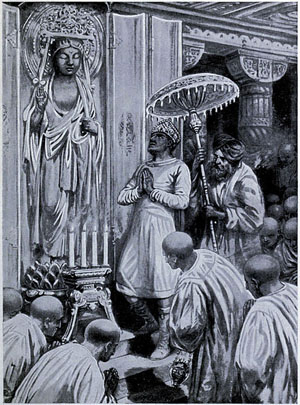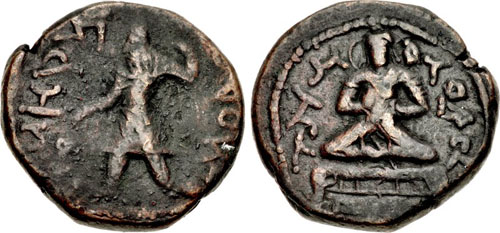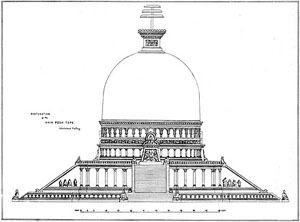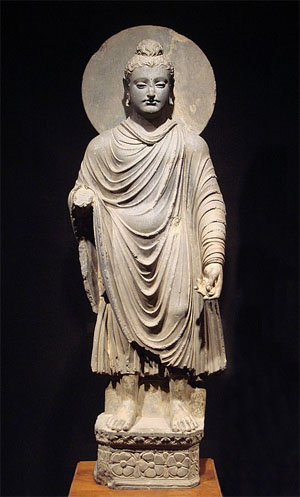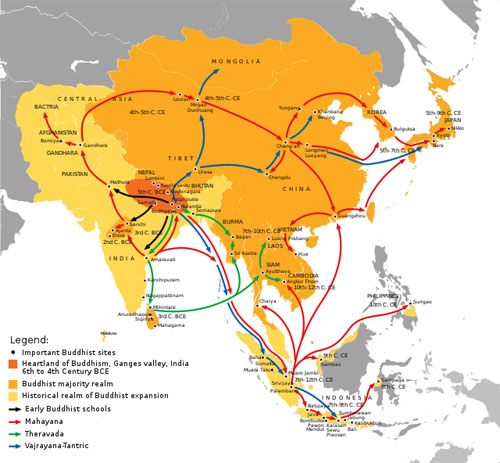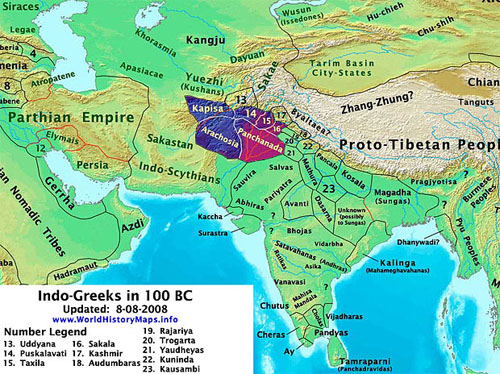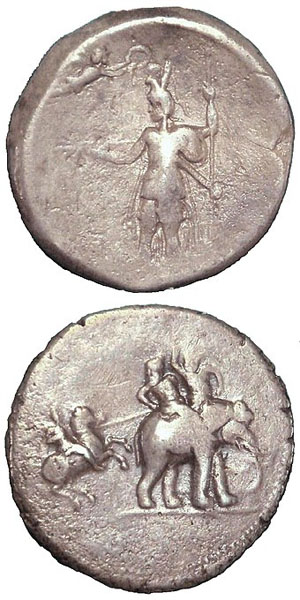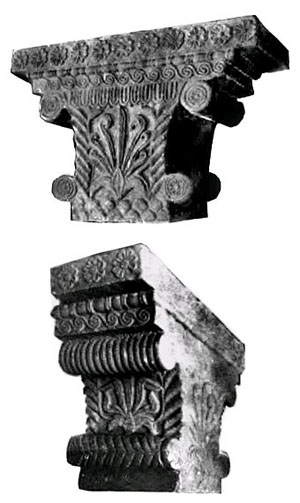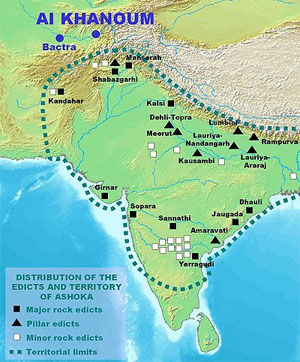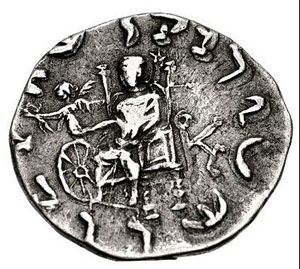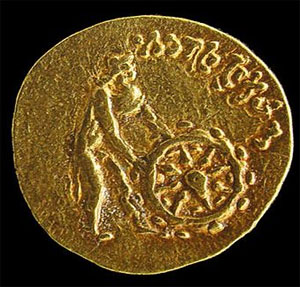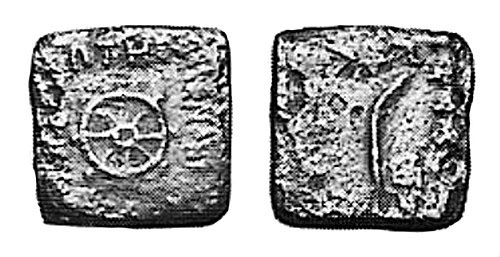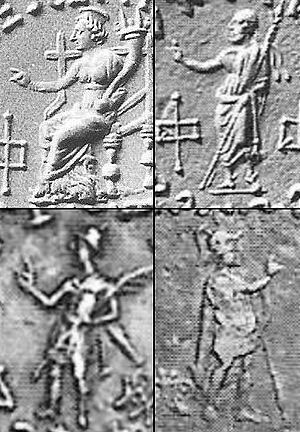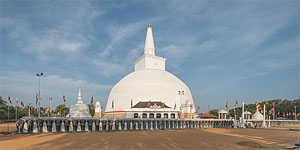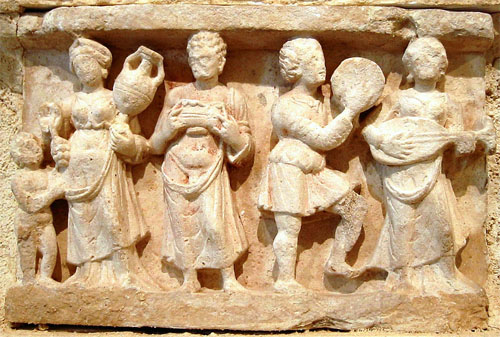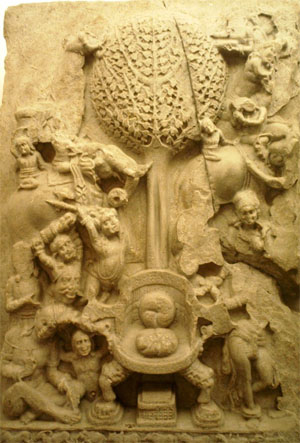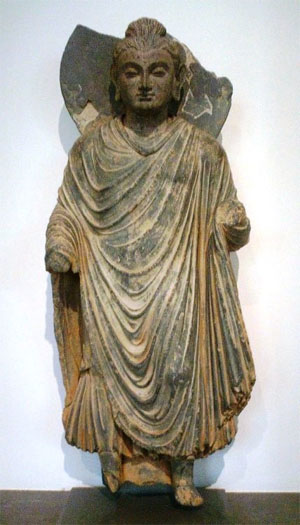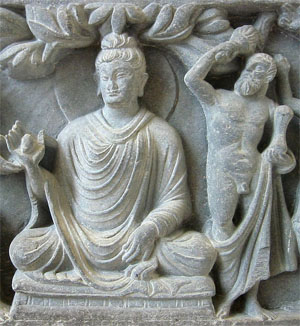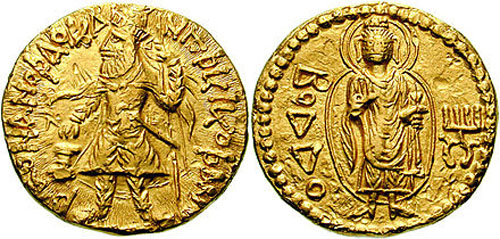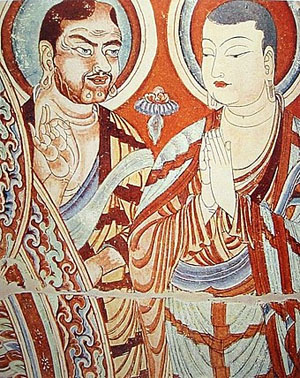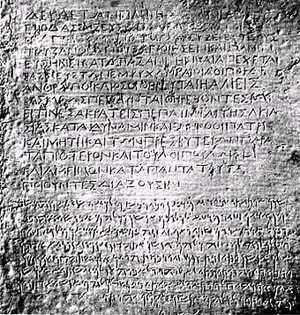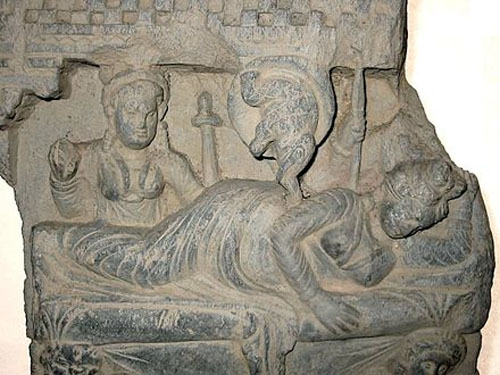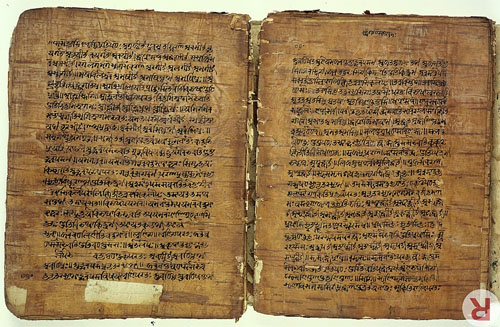The Siege of Madras in 1746 and the Action of La Bourdonnais
by G.W. Forrest, CLE.
Transactions of the Royal Historical Society
Third Series, Vol. II, P. 189-
1908
Read May 21, 1908
When I was invited to read a paper on Indian history at a meeting of the Royal Historical Society I felt not only honoured by the request, but also gratified to learn that the Society intended to bring within its scope the encouragement of the study of the history of our Indian Empire, an empire whose progress and growth is a wondrous fact in the history of the world. The history of the Hindu kingdoms and the history of the government of the Mahomedans should be the special province of the Royal Asiatic Society, for no Englishman can deal with them in a satisfactory manner without a knowledge of the classical languages of the East He must study and compare the original historians of India. The systematic study of the history of British dominion in India must be the most effectual agency in removing that ignorance (so strange and so discreditable) which prevails among all classes in England regarding the history of our Indian Empire. The responsibility for a just, impartial and stable government of India has been committed for good or evil into the hands of Parliament, and through Parliament to the electoral body of Great Britain; but the electoral body must fail to discharge that great responsibility if the reading multitude remain ignorant of the history of English government in India. It is also the duty and the interest of England that the young men who are sent from our universities to be the main instruments of administering the government of our Indian Empire in all its extensive and complicated branches should be trained to pursue the study of history in a scientific spirit, so that they may be able to apply scientific methods of inquiry to an examination in detail of the development of our administration in India. Many years spent in examining the musty documents in the Indian archives has brought home to me the value of the light which history may shed on practical problems. In India there is no problem which is old, there is no problem which is new. Measures which were supposed to be new would never have been passed if they had been studied by the dry light of history. In the Record Office under his charge the Indian civilian will generally find some material which will reward the labour of research.
In selecting a subject for my paper, I have been embarrassed by the numerous topics that were open to me. I might have selected a more recent and a more exciting period of Indian history. I might have selected a siege of greater dramatic interest I was guided in my choice by remembering that the object of history is to discover and set forth facts. The first object of a Historical Society should be to record and diffuse the knowledge of the facts which have been discovered. I chose the Siege of Madras in 1746 as my subject because it enabled me to bring to your notice this afternoon two documents of considerable historical value. The duties of my office as Director of Records of the Government of India led me to pay sundry visits to Madras. My primary aim was to search among the archives of that Government for all papers relating to Clive. Many a happy day have I spent in the company of Stringer Lawrence who taught Clive to be a soldier, of Clive himself, of Eyre Coote, and of Bussy whose sagacity and address were equal to that of Warren Hastings, and whose courage and genius were hardly inferior to that of Clive. Gentlemen, in that stubborn struggle between French and English in Southern India for a great dominion there is sufficient glory to cover both nations. In order to complete my work, I paid sundry visits to Pondicherry, a picturesque French city transplanted to the East I have stood by the fine statue, unlike most English statues, full of originality and life, which France has erected as a monument of one of the most famous of her sons. The sculptor has succeeded in giving the magnificent head, the lofty and wise forehead, and the intellectual face full of energy and penetration, of the great French administrator — Dupleix. When I was at Pondicherry I was taken to the house of a native gentleman, where we saw hanging on a wall the watch and a miniature of Dupleix given to their ancestor Ranga Pillai. Below them burn a lamp. It is now regarded as a household shrine. Ranga Filial held the post of chief dubash, or the broker who transacted business with the natives for the Pondicherry Government. He was on intimate terms with Dupleix and his wife, who seem to have had the greatest confidence in his integrity and judgment General Macleod, R.A., Consular Agent at Pondicherry, informed me that Ranga Filial had left a most valuable diary. In 1892 General Macleod and myself brought to the notice of the Madras Government the existence of the diary, and it was suggested that the matter which it contained was of such interest and value that it was highly desirable that a copy of it should be obtained, and a translation made of this and published. The Madras Government, which was then presided over by Lord Wenlock, readily adopted the suggestion, and after considerable research the undoubted originals of volumes i. and ii. and the last volume were discovered. They have been transcribed, and two volumes of translation published. They have been edited with the utmost care by Sir Frederick Price, who on his retirement from the Madras Civil Service after a long and distinguished career has devoted his time to so laborious a task.1 [ 'In 1846 M. Gallois Montbrun, the father of the gentleman who until recently was Mayor of Pondicherry — to whose courteous help in making search and enquiry regarding the diary I desire here to express my indebtedness — unearthed the manuscript, which up to then had lain unheeded in the house of the representatives of the family. M. Montbrun, who took the deepest interest in old vernacular writings, then proceeded to make a copy of it. But he apparently started with selections only, for the volume from which the translation for the Government of Madras was originally made is full of breaks. This was not observed until the actual work of editing was commenced. The omissions then noticed led to inquiry, and it was ascertained that M. Montbrun had subsequently supplied the blanks by a supplemental volume, which, however, was not forth- coming. Further search was made, and this resulted in the discovery of the undoubted originals of volumes i. and ii. The volume now being published is practically a fresh translation from these. — Ranga Pillai's Diary, vol. i. General Introduction, pp. xiii, xiv. Another copy of the Diary, which is in the National Library in Paris, was made by M. Areel, but at present it is impossible to ascertain whether it is perfect. In 1870 was published Le Siege de Pondichery en 1746: Extrait des Memoires Inedits de Ranga Poulle Divan de la Compagnie des Indes, par F. N. Laude, Procureur-General. In 1889, M. Julien Vinson, Professor of the Special School of Living Oriental Languages at Paris, published a translation of some portions of it, which he followed up in 1894 by a volume amplifying these, and bearing the title of Les Francais dans l'Inde, This, however, does not go beyond 1748, and is composed of extracts referring only to a few special matters.'] The diary, never meant for publication, is a very human document, and it reveals to us the habits and manners of the time. It brings to life Dupleix and his wife, whose influence on his career was so great. She was a widow; her father was French, her mother an Indo-Portuguese. She was born and educated in India. Her brains, her strength of character, her diplomatic skill, her knowledge of the native languages (she corresponded with the native princes in their own language) were of the utmost service in forwarding the political schemes of her husband. She was to Dupleix what the beloved Marian was to Warren Hastings. Macintosh, 'the man of promise,' said that Jonathan Duncan had been Brahmanised and Wellesley Sultanised. Ranga Pillai reveals to us that Dupleix was both 'Brahminised' and 'Sultanised' and this accounts in a great measure for his failure. I shall illustrate the lecture by extracts from his diary. I also intend to read to you an important document which contains some fresh evidence as to whether La Bourdonnais received a large present from the English for the restoration to them of Madras.
In a paper on a particular period of English history the reader may fairly assume the possession by the audience of a certain knowledge of the events which preceded it But I am sorry to say that the same test does not always apply in the case of Indian history. It may therefore be desirable to give a brief account of the rise of Madras and Pondicherry, and of the leading events which preceded the siege of the former city in 1746.1 [With regard to the early history of Madras, we owe a good deal to Mr. Talboy Wheeler, to whose work in the field of Indian history sufficient justice has not been done; to Mr. Pringle, whose early death prevented the completion of his most excellent Selections from the Madras Records; to Mr. William Foster, Superintendent of Records at the India Office, who is so willing to aid any fellow-labourer, and to bestow on him the fruits of his own research.]
The foundation of Fort St George was due to the struggle between the Portuguese, the Dutch and the English as to who should enjoy the trade between India and the Spice Islands. In 1611, eleven years after Elizabeth had granted the first charter to 'the Governor and Company of Merchants of London trading into the East Indies', Captain Hippon was despatched by the directors of the India Company in the ship Globe to open a trade with the Coromandel coast. He was accompanied by two Dutch merchants, Peter Floris and Lucas Antheunis.2 [The Journal of Peter Floris is in the India Office. Extracts from it were printed by Purchas.] The English and Dutch were both attracted to the eastern coast of Hindostan by the same object They wished to purchase painted cloths, or Indian cotton goods, and take them to the Moluccas in exchange for spices to be sold in Europe. The Globe touched at Pulicat, where the Dutch had established a factory and built a fort The Dutch governor, Van Wersecke, refused to allow the English to trade. Hippon, therefore, left Pulicat and coasted up the Bay of Bengal till he reached Masulipatam at the mouth of the Kistna, then the principal port of that part of India. At Masulipatam the English managed to establish a small agency, which was put under a chief, and a council was chosen from the merchants. Fifteen years later, in 1626, a factory was established and fortified at Armagon, a roadstead south of Masulipatam, and forty miles north of Pulicat It was the first fortification erected by the English in India. In the year 1628-9 Armagon is described as defended by twelve pieces of cannon mounted round the factory, and by a guard of twenty-three factors and soldiers. The factory at Masulipatam was transferred in 1629 to this fortress owing to the oppression of the native governor. But Armagon was not a good entrepot for the supply of 'white cloths,' and three years later the agency was again established at Masulipatam.
In 1639, Francis Day, one of the council at Masulipatam, was sent to examine the country in the vicinity of the station which the Portuguese, who were then friendly to us, had established at St. Thome.1 [Alfred the Great sent an embassy, under Bishop Sighelm, of Sherborne, to do honour to the tomb of a Holy Thomas. Gibbon hints that the envoys got no further than Alexandria, the great centre-point of the East and West, where they collected their cargo, and invented the legend. According to the legend of antiquity the Gospel was preached in India by St. Thomas. It was preached in the eighth century by Thomas Cana, an Armenian merchant, as Marco Polo was informed on the spot, at Meleapoor, the native name for St Thome.] Day 'was Inordered to goe towards St Thomay to see what payntings2 [Payntings, painted cloths, i.e. chintz.] those parts doth afforde, as alsoe to see whether any place were fitt to fortifie upon.' In August of the same year, three years before the outbreak of the Civil War in England, Day, 'haveinge Dispatcht what hee was sent about,' returned to Masulipatam and told his colleagues what he had done.
'And, first, he makes it appeare to us that at a place Called Madraspatam, neare St. Thomay, the best paintings are made, or as good as anywhere on this Coast, likwise Exellant long Cloath, Morrees,3 [Morrees (muri), blue cloth.] and percalla4 [Percalla (parkala), spangled cloth.] (of which wee have scene Musters), and better Cheape by 2c per cent, then anywhere Else. The Nague5 [Naik, H. (Nayak) was a general name for the Lords of Madura and other places in Southern India until the middle of the tenth century.] of that place is very Desirous of our residence there, for hee hath made us very fayre proffers to that Effect; for, first, hee proffers to build a forte, in what manner wee please, upon a high plott of ground adjoyneinge to the sea, where a ship of any Burthen may Ride within Muskett shott. Close by a river which is Capeable of a Vessel of 50 Tonns; and upon possession given us by him, and not before, to pay what Charges hee shall have disbursed.'6 [The Founding of Fort St. George, Madras, by William Foster, p. 10.]
Day was 'dispeeded' back to Madraspatam, and so important was the new acquisition considered that the agency at Masulipatam directed him to begin building the fort without waiting for the orders of the Court from England.
In their first letter, dated September 20, 1642, 'the Agent and Council on the Coast of Coromandel ' write:
'When wee doe (as that wee doe often) fall into Consideration how much your Worships are displeased with us, for proceedinge on this worke, it even breakes some of our hearts. Tis now to late to wish it undone, and yett wee may not but tell you that if soe bee your Woi ships will follow this Coast Trade (or rather the Kamatt) this place may proove as good as the best, but all things must have its growth and tyme, but on the contrary, if your Worships will not continew it, you may doe it away to proffiett, and not hazard the loss of a man, if you Resolve upon the latter, after advice given once within 12 mo, it may with ease be effected, unless the Moores Conquer the Country before .... wee have found him [our naique] still as good as his word, onely in the Forts erection (the Mayne thinge of all); but in that thinge he excuseth himself.'1 [Original Correspondence, No. 1791.]
Day offered 'to pay the Interest of all the monies that should be expended till the Forte was finished,' but their worships at home refused ' to allow of any Charge of [at?] all neither in building or payeing of Garrison.'
The fort, as first erected, was but a small place, not a quarter of a mile long, only a hundred yards wide from east to west, and situated in the north-east comer of the present fort Five years after its first erection its total cost had been only Rs. 23,000, and the highest estimate of a sufficient garrison was one hundred soldiers. In 1652, thirteen years after its foundation, it was considered safe with a garrison of twenty men. No great change was made in it for a century.
Madras, however, proved 'as good as the best.' A large number of natives sought protection of the English. Thus a prosperous settlement arose outside the English bounds which part was styled the Black Town, the original settlement, where none but Europeans were allowed to reside, being known as the White Town. When war was declared between England and France in 1744, the town had, owing to the trade from England to the coast of Coromandel, 'to the great returnes it makes in callicoes and muslins,' to its considerable trade with China, Persia and Mocha, and to its 'not being a great way from the diamond mines of Golconda,' risen * to a degree of opulence and reputation which rendered it inferior to none of the European establishments in trade except Goa and Batavia.' There were 250,000 inhabitants in the Company's territory, of which the greatest part were natives of India of various castes and religions. The English in the colony, however, did not exceed the number of 300 men, and 200 of these were soldiers who composed the garrison, 'but none of them, excepting two or three of their officers, had ever seen any other service than that of the parade.' Fort St George 'was surrounded with a slender wall, defended with four bastions and as many batteries,' but these were very slight and defective in their construction, nor had they any outworks to defend them. The principal buildings inside were fifty good houses in which the chief Europeans resided, an English and a Roman Catholic church, the warehouse of the Company and the factory in which their servants lived.
On September 24, 1744, 'at a Consultation, Present Nicholas Morse, Esq., Governour and President,' it was 'Agreed to despatch a Pattamar1 [Pattimar, Tam., messenger.] this evening at Bombay to advise of the war with France lest any accident should have befallen the King William.' It was further agreed, 'The war with France being broke out and it being therefore highly proper to have our garrison in the best order we can, and as it happened that for some months past there have not been less than forty to fifty of the Military on the Sick Roll which, with the servants hitherto allowed the officers, reduces considerably the number of Mounting Men. Its agreed that in lieu of servants each Lieutenant have five (5) Pagodas1 [A pagoda was worth forty-two fanams, or about seven shillings.] per month and Each Ensign four (4), and that this be continued to them only so long as the Board shall think it necessary.'2 [The Consultations and Diary Book of the President and Governor, &c., Council of Fort St. George, September 24, 1744.] This is the first mention in the records of that long combat which was to determine the issue whether France or England should win an empire in Asia.
On August 27, 1664, twenty-five years after Francis Day had obtained permission to form the settlement of Madras, Louis XIV., induced by Colbert, issued an edict founding the French East India Company.'3 [L'Inde Francaise avant Dupleix, par H. Castonnel des Fosses, p. 49.] The French, settling to work with considerable zeal, established factories at Surat and other places on the Malabar coast In 1672 they took from the Dutch, with whom they were at war, the splendid harbour of Trincomalee; but the Dutch soon retook it. The French then passed over to the Coromandel coast and obtained possession of St. Thome; two years later they were compelled to restore it also to the Dutch. The fortune of the French East India Company, now at its lowest ebb, was revived by the far sight, courage and administrative capacity of Francois Martin, whose name shines with a fair and honest lustre in an age of intrigue and corruption. Martin had lent the governor of Jinji, the great mountain fortress sixty miles from Pondicherry, money he could not repay, and in return he bestowed upon him a village4 [It was called by the natives Puduchere, which, by degrees, was corrupted to Pondicherry.] near the coast, and gave him permission to fortify a strip of land by the sea. Here, in 1676, Martin brought sixty Frenchmen, all that remained of the factories at Ceylon and St Thom6. 'The fortification that Martin erected could not have been of any great extent, seeing that it cost only the modest sum of seven hundred crowns.' Beneath the shelter of the slender walls he, however, proceeded to lay out streets and to build houses for the native weavers, whom he wished to attract to his new settlement The aim of his policy was to gather at Pondicherry a thrifty, loyal population, and he was wise enough to see that the best way of doing this was by respecting the manners, customs and religion of the people, and so winning their love and confidence. His policy proved eminently successful. However, just as Martin's little colony began to rise and flourish, a grave danger menaced it. Sivaji seized Jinji and threatened an attack on the new settlement. But Martin pacified the great freebooter by a present of 500 pagodas, and obtained from him a grant for the French to reside at Pondicherry in perpetuity on condition they did not interfere in the wars of the neighbouring states. Sivaji, however, insisted that the French should pay him a heavy tax on the imports and exports of the little colony, which continued to grow in wealth and importance. To protect it still further, Martin now threw around the town a wall, which was flanked by four towers, each of which mounted six guns. He had hardly finished the new fortifications when war broke out between France and Holland, and in 1693 Pondicherry was attacked by a Dutch fleet consisting of nineteen ships of war. Martin, who had only forty European soldiers to defend the place, was compelled to surrender. The Dutch, fully realising the value of their new possession, proceeded to improve the town and fortification, and make it the capital of their Indian possessions. But, five years after it had come into their hands, the treaty of Ryswick restored Pondicherry to the French. Martin hastened from France to resume possession of the city which he had founded, but the Dutch refused to restore it until they had been handsomely compensated for the improvements they had made. A French writer with patriotic indignation states: 'The sale, characteristic of a nation of traders, took place on the 17th September 1699, when Martin paid 16,000 pagodas to the Director of the Dutch Company as the price of the improvements and fortifications they had made.' Under the wise and vigorous administration of Martin, the town rapidly grew in prosperity. He mapped out new streets on the lines of an important European capital, erected substantial houses, warehouses and shops, and built a palace for the governor. When the English had only a small factory at Calcutta, and Chowringee was a malarious swamp, Pondicherry was a flourishing town with fifty thousand inhabitants. For the greater protection of the city Martin proceeded to construct a citadel after the model of Tournay. When finished, the new fortress was consecrated with great pomp and ceremony. On August 25, 1706, a stately procession of laymen and priests, chanting the Te Deum and Exaudiat, wended its way around the town, and as it reached the bastion, the cannons sent forth a roar of triumph and joy. This was the crowning day of Francois Martin's life. A few months later the patriot's manly heart ceased to beat.
After the death of Francois Martin, two of his successors, Lenoir and Dumas, managed the Company's affairs with prudence and sagacity. Mahe and Karikal were acquired by France, and Pondicherry soon rose to distinguished importance among the European settlements in India. Dumas was succeeded by Dupleix, who, after being first member of the supreme council at Pondicherry for ten years, was appointed chief of the French factory at Chandernagore in Bengal. By his knowledge of Orientals, by his strong business capacity, he not only amassed a fortune for himself, due to the coast trade which he introduced, but he raised Chandernagore from an insignificant village on the Hooghly to a rich and populous colony. The success at Chandernagore led to his being appointed governor of Pondicherry and ex-officio director-general of the affairs of the French East Company. On arriving at Pondicherry he found there La Bourdonnais, whom he had known in former years. They were of the same age, both endowed with extraordinary abilities, but dissimilar in their talents and their character. Born at the ancient town of St Malo, a nursery for hardy mariners. La Bourdonnais made several voyages to different parts of the world. He entered, when he was twenty, the service of the French East India Company. After having served as lieutenant and second captain, he left the Company in 1727, and commanded, as 'captain and supercargo,' the Pondicherry, a special vessel which had been commissioned by Lenoir and the council of Pondicherry. For five years he traded on the coast Then he quarrelled with Lenoir and entered the Portuguese service, in which he remained for two years. In 1733, he returned to France. He sent to the ministry a report on the situation in India, and was appointed, in 1735, governor of the Isle of France and Bourbon. The appointment was criticised, and Dupleix wrote at the time: 'I am utterly amazed. The Company must have lost its head. God grant that they may not repent the step. The petulance and vivacity of the man make me fear it The Company has been fascinated by the rigmaroles of this flighty spirit'.1 [Dupleix by Prosper Cultru, p. 200.] Dupleix was, however, jealous of La Bourdonnais, and saw in him a rival for the government of Pondicherry. The islands of Mauritius and Bourbon had been taken possession of by the French after they had been abandoned by the Dutch and the Portuguese. When La Bourdonnais arrived, they were in a lamentable state of barbarism and prostration, induced by extravagant abuse and cruel misgovernment. He made them healthy and prosperous. He taught the art of agriculture to the runaway slaves who inhabited the dense forests in the interior, and introduced the culture of the sugar-cane, cotton and indigo; he constructed vehicles, broke in bulls, and made roads for their commerce to the sea. He built docks, quays, mills, arsenals; also a hospital, which he visited every day. By his constant personal supervision, and the healthy stimulus of his strong character, the islands became, during the eleven years of his rule, flourishing colonies, and the naval arsenal in the East But strong complaints were brought by 'captains of ships, and other visitants of the islands, whom he checked in their unreasonable demands, and from whom he exacted the discharge of their duties,' to the ears of the Company's directors, who, 'with too little knowledge for accurate judgment, and too little interest for careful inquiry, inferred culpability, because there was accusation.'1 [Mill, History of India, vol. iii. p. 41.]
In 1739, La Bourdonnais returned to France. He saw that war with England must shortly arise, and he proposed to certain friends that they should subscribe to equip a fleet to cruise in search of English merchantmen. But the ministry proposed to send out a fleet composed partly of the king's ships and partly of the Company's ships, with La Bourdonnais in command, and La Bourdonnais gives us no explanation of this change of plan. On April 5, 1741, he sailed from L'Orient with five of the Company's ships, and arrived at the Isle of France on August 14. He there learnt that the Mahrattas had invaded the Carnatic and that the garrisons had left the islands, summoned by Dumas, the governor of Pondicherry, who feared a siege. La Bourdonnais, when he reached Pondicherry, found the danger had blown over, but that Mahe had been eight months blockaded.
On January 14, 1742, Dupleix reached Pondicherry and succeeded Dumas as governor. To him La Bourdonnais explained his project of capturing Madras when war was declared. Dupleix approved of it and sent Paradis, an able Swiss soldier and an engineer, on a secret mission to Madras, who examined the place with sufficient precision to enable him to draw up a memorandum and prepare a plan of attack. La Bourdonnais proceeded to Mahe, chastised the enemy, re-established the factory, and then returned to the Mauritius, ready to prey upon the English commerce. But the finances of the French Company did not admit of their keeping ships without some commercial profit, and, hoping that neutrality would be maintained in India, they recalled the fleet It was a grave error.
When the ministers in England heard of the preparations made by the French, they sent a squadron of men-of-war in 1744 under Commander Barnet to India. It consisted of two sixty-gun ships, one of fifty, and a frigate of twenty guns. They sailed first to the straits between India and China, where they took 'three French ships returning from China to Europe, and one returning from Manilha to Pondicherry, the cargoes of which prizes produced the sum of 180,000 l. sterling. They also took a French East India ship, which was converted into an English man-of-war of forty guns.1 [ Orme, vol. i. p. 61.] In July 1745 the squadron appeared upon the coast of Coromandel, at which time the garrison of Pondicherry consisted of no more than 436 Europeans, and its fortifications were still incomplete. This was due to no fault of Dupleix, for as soon as he took charge, he began to reform the administration, to discipline the soldiers, to recruit sepoys and to build fortifications. But, on September 18, 1743, he received a despatch from the Company which told him 'to make a point of reducing all expenses by at least one half, and to suspend all outlay on buildings and fortifications.' He obeyed the first order. But he continued with renewed vigour the construction of the fortifications. He advanced to the treasury of the Company 'cinq cent mille livres '; a part of it he employed on the fortifications, and the remainder in supplying cargoes for two ships, which he sent post-haste to France for arms, munition of war and men. But before reinforcements could reach him or the fortifications be completed, the English squadron anchored off Fort St David. Pondicherry was now at their mercy. Happily for the French, the Nawab of the Carnatic informed the Madras government that their ships of war must not 'commit any hostilities by land against the French possessions' within his territories. At the same time he assured the English that 'he would oblige the French to observe the same law of neutrality, if their force should hereafter become superior to that of the English.'
Moved by these threats, the authorities at Madras persuaded Barnet to suspend his attack. He sent one of the fifty-gun ships to cruise at the entrance of the Ganges, where she took several ships returning to Bengal. Soon after, the approach of the monsoon compelled him to leave the coast.
In the beginning of 1746 the squadron returned to the coast of Coromandel, and was reinforced by two fifty-gun ships and a frigate of twenty guns from England. The sixty-gun ship however, in which Barnet hoisted his flag, was found unfit for action, and, together with the frigate, was sent back to England. The French squadron was now daily expected. But months went on and no French ships could be seen. 'The 29th April 174S, Mr. Barnet departed this life at this place [Fort St David] when all the ships were here or near us.' His death was generally regretted as a public loss, 'and indeed he was a man of great abilities in public affairs.' Captain Peyton then commanded the squadron as senior captain. On June 9, the Princess Mary^ laden with bales and treasure, 'sailed to Madras under convoy of his Majesty's Ship the Lively, as did the rest of the squadron for Trancomolay.' But just as they were getting to the Bay, the Preston's bowspirit was sprung and they had to bear away to Negapatam. 'On the 25 at daybreak, from the mast- head in Negapatam road, they made several ships in the offing to which they Went out and found them to be nine (9) French ships.'
On September 18, in the previous year, 1744, the frigate La Fiere had arrived at the Mauritius with the news that war had been declared. She also brought a message from the directors to La Bourdonnais forbidding him to commence hostilities; he was only to return them. La Bourdonnais began at once to arm all the Company's ships he could collect, and he wrote to Dupleix that he could assemble six vessels and 1,500 to 1,800 men. These, with 300 to 400 furnished by Dupleix, would make a little army with which they might carry out some enterprise that would repair their losses. He proposed that he should send half of his ships to cruise for the Company and half for Dupleix and himself. He further suggested the vessels should cruise between the Cape and St. Helena, because, in all probability, the Indian Seas would be a neutral region. Dupleix replied that he had approached the English governor, and therefore counted on the maintenance of peace. He added that he had very few soldiers, barely enough to guard Pondicherry. He also disapproved of the cruise in the Atlantic as it would be contrary to the wishes of the Company, who could not authorise their officers to sail under the conditions proposed by La Bourdonnais, without running the risk of ruining their ordinary commerce, which was less protected than that of the English. But the capture of the China ships by Barnet, in some of which Dupleix had a pecuniary interest, roused his wrath, and drove from his mind all thoughts of neutrality. He set about equipping the country ships to follow the squadron. La Bourdonnais now sent him a plan of his voyage, and inquired if the scheme of 1741 for taking Madras was still feasible. He asked for the service of Paradis and a body of sepoys. He was certain that, with the aid of Dupleix, he could easily take and retain Madras. He had studied Paradis's plan, and he sent Dupleix the result of his study. 'It is,' says he, 'the only means of repairing our loss.' A little later he asked Dupleix to send him clothes for his troops, arms and the munitions of war. Dupleix complied with the greatest good-nature with these requests. He was full of zeal for the enterprise, and burning to have his revenge for the loss of the China ships. He once more had Madras thoroughly explored, and procured an account of the place from Madame Baraval, his wife's daughter, who was married to an Englishman. He had a plan made on a large scale indicating the measures pro- posed by Paradis for taking the fort.1 [Dupleix, by Prosper Cultru, p. 203.]
Meanwhile the departure of the ships which La Bourdonnais had equipped was delayed by the news that a fleet was being sent from France. La Bourdonnais was appointed to the command, and it was suggested to him that, after having landed the treasure on board the ships at Pondicherry, he should proceed to the Bay of Bengal. He might, if he wished, return to the Mauritius about June 1746, and start for France with the fleet in 1747. But the French fleet, which was expected in October, did not reach the Mauritius till January 1746. They arrived in bad order, and only one was armed. La Bourdonnais with characteristic energy proceeded to repair and equip them, and as soon as they were ready he sent them to Madagascar. On March 24 he sailed in the last ship from the Mauritius. Before his ships left Madagascar they were driven from their anchorage and scattered by a hurricane. One was lost and the rest greatly damaged. La Bourdonnais, collecting them in the bay of a desert island on the coast of Madagascar, refitted them, 'overcoming the greatest difficulties with such indefatigable perseverance and activity as intitles him to a reputation equal to that of the ablest marine officer his country has produced.'1 [Orme, i. 63. Mill writes: 'Here the operations of repairing were to be renewed, and in still more unfavourable circumstances. To get the wood they required, a road was made across a marsh, a league in circumference; the rains were incessant; disease broke out among the people; and many of the officers showed a bad disposition; yet the work was prosecuted with so much efficiency, that in forty-eight days the fleet was ready for sea.' — Vol. iii. p. 44.] In forty-eight days the fleet was again ready for sea. It now consisted of nine sail containing 3,342 men, among whom were 720 blacks and from three to four hundred sick. In passing the island of Ceylon they heard the English fleet was at hand, and on June 25 the British ships appeared to windward, advancing in full sail towards them.
La Bourdonnais knew that he was superior to the English in number of men, but greatly inferior in weight of cannon. He therefore determined to gain, if possible, the wind and to board. But Peyton, seeing his design, kept the wind and so frustrated it. The breeze was also light, and it was not till four in the afternoon that a distant fight began and lasted till about seven, when it grew dark. 'In the English squadron,' the despatch states, 'were Fourteen killed and Forty Six wounded, but not one killed or wounded in the Medway' The Medway was Peyton's ship.2 [Despatch from Fort St. David, October 17, 1746. Orme states: 'The fight finished with the entrance of the night; about thirty-five men were killed in the English squadron, and the greatest part of these on board the forty-gun ship. We are not exactly informed of the loss sustained by the French; but it was believed that the killed and wounded together did not amount to less than 300. One of their ships, that which mounted thirty guns, was in less than half an hour dismasted and so much shattered that immediately after the action Mr. De la Bourdonnais ordered her to proceed to Bengal to be refitted in the Ganges.' — Vol. i. p. 64.]
The next morning the two squadrons were near one another, according to the despatch, and continued so all the day. 'At four in the afternoon Capt. Payton summoned a Council of War when it was agreed not to engage the enemy but to proceed to Trincomalay Bay.' The resolution was mainly due to the sixty-gun ship being extremely leaky. The English ships made sail for the harbour of Trincomalee, and in the evening lost sight of the French squadron, which had lain to the whole day as if challenging the English, who were to windward, to bear down and renew the fight. 'This appearance of resolution in M. De la Bourdonnais,' writes Orme, ' was no more than a feint, practised to deter the English from doing what most he dreaded; for most of his ships had expended the greatest part of their ammunition, and several of them had not victuals on board for twenty-four hours.'1 [Orme, vol. i. p. 64.] La Bourdonnais in his 'Memoirs' states that it was not a feint, and that it was with supreme regret that he saw the English escape him.
On Saturday, July 9, 1746, Ranga Pillai enters in his diary:
'This evening at 5, M. de la Bourdonnais disembarked [at Pondicherry], and as he did so, fifteen guns were discharged by his ship. Another salute of fifteen guns was fired on his arrival at the sea-gate, where he was met by the Deputy Governor and other members of the Council, and by the Captain and other officers — M. Dupleix alone excepted — and was escorted by them to the Governor's residence. On M. de la Bourdonnais entering this, the Governor received him at the Sentinel's post, with an embrace, and conducted him into the courtyard, when a salute of fifteen guns was again fired. They afterwards conversed together for a while in the open space on the other side of the verandah.'2 [Ranga Pillai's Diary, vol. ii. p. 113.]
Four days later, as La Bourdonnais was leaving Pondicherry, the soldiers at the gate turned out and formed up as a guard of honour. He, however, sent word to them by his peon that such a ceremonial was unnecessary as he was not wearing uniform, but had on only a dressing-gown and night-cap. 'Nevertheless they paid him the honour and beat the Tambour.' On his return the guards at the gates were anxious to pay him the same honour, but he begged they would do nothing of the sort He afterwards sent for Captain Duquesne:1 [Ranga Pillai's Diary, vol. ii. p. 121.]
'Because I am within the jurisdiction of your Governor, your guards, when I pass them, beat the "Tambour" for me, an honour accorded to the Deputy Governor. But I suppose that you will not take exception to the beating, as is done in the case of the Governor, of the "Tambour-aux-champs" for me when surrounded by my own majors, captains, and soldiers?'2 [This was the major form of salute, and was accorded only to officials of high degree. It still exists in the French army.]
M. Duquesne replied that he could not allow it.
On the following day Ranga Pillai informs us:3 [Ranga Pillai's Diary, vol. ii. p. 223.]
'M. de la Bourdonnais landed some of those who were aboard the ships; and mustering all his soldiers, who had been posted at the city gates in forties and fifties, as also his officers, and the men whom he had brought ashore, held a parade opposite to the Governor's house, and reviewed them. He then stood in their midst, when he was saluted by them with their weapons, after the manner of the Governor. After the parade was over, he repaired to M. Desjardins' house, which had been assigned to him as a residence. The parade held by M. de la Bourdonnais was not attended or witnessed by M. Dupleix, who pretended to be asleep all the while, and then having dressed after the troops had dispersed, came out to sit as usual in the courtyard. The Deputy Governor and others, who had for some time been waiting outside, presented themselves before him. M. de la Bourdonnais also paid him a visit. The Governor and he entertain a mutual dislike for one another. The former is aggrieved because M. de la Bourdonnais does not regard himself as his subordinate, maintains a guard of honour of troopers, keeps at his residence a party of soldiers and troopers, and conducts everything independently, and without consultation with him; whilst M. de la Bourdonnais holds that he is on a par with the Governor, and is consequently entitled to all the honours accorded to that functionary; and that the control of military operations resting wholly with him, he is not bound to consult the Governor in matters connected therewith. Thus business is transacted between them with but little cordiality. The future development of this remains to be seen.'
On July 16, in a conversation with Ranga Pillai, Dupleix gave vent to his feelings:1 [Ranga Pillai's Diary, vol. ii. p. 128.]
'In the course of conversation with me this morning at 9, the Governor said as follows: "M. de la Bourdonnais is a strange man, with an ungovernable temper. He is a babbler. His injustice to Mascareigne drove the inhabitants there to petition against him to the Minister in France. He was on the point of being executed; but thanks to his good luck, which seems to attend him still, he effected his escape by propitiating with lavish presents M. de Fuivy, the brother of the Comptroller-General, who was open to bribes. With a squadron of seven sail he set out on an expedition to Arabia, boasting that he would subjugate that country. But he failed in this project, and thereby caused serious loss to the Company. He is a great impostor." M. Dupleix said many other disparaging things of M. de la Bourdonnais. Not only did I throughout express myself in harmony with his views, but I dwelt at length, and in highly eulogistic terms, on the address with which he administered the affairs of this city at so critical a time as the present.'
On July 17 La Bourdonnais wrote to Dupleix asking for sixty large cannon, a body of men, and food for the squadron. He intended to search for the English vessels, and, having defeated them, return and attack Madras. He consulted Dupleix as to what he was to do with the town. Was he to occupy it, or demolish it? He awaited the decision of Dupleix, and declared that 'all the glory was for him, whose help had made the expedition possible.' Dupleix supplied him with men, ammunition, and twenty-six guns, though he writes, 'These cannons leave many blanks in our ramparts.'
On August 3 Ranga Pillai enters in his diary:
'At noon to-day M. de la Bourdonnais and the Governor, M. Dupleix, were entertained by M. de la Villebague at his house. At about 3, they left in palanquins; that of M. de la Bourdonnais preceding that of M. Dupleix. As they passed out together through the sea-gate, the "Tambour-aux-champs" was beaten. They alighted at the custom-house, and there, as he was starting on an expedition against Commodore Peyton who commands the English fleet, M. de la Bourdonnais bade M. Dupleix farewell. A salute of twenty-one guns was then fired. The Governor accompanied M. de la Bourdonnais to the boat, embracing and kissing him before he embarked. When the boat with M. de la Bourdonnais on board pushed off from the shore, there was another salute of twenty-one guns. The Governor watched it until it had passed the outer surf, then returned to his house, and afterwards went out for a drive.'1 [Ranga Pillai's Diary, vol. ii. p. 166.]
Ranga Pillai enters in his diary on August 4: 'The fleet of M. de la Bourdonnais consisting of eight ships set sail at II this forenoon to seek the English at Galle, Colombo, Jaffna, and Trincomalee.' Orme says the French squadron sailed from Pondicherry on July 24, 'working to the southward against the southern monsoon and on the 6th of August discovered that of the English which had been refitted at Trincomalee.'
Mill says: 'On the 17th [August] he [La Bourdonnais] descried the English fleet off Negapatam, and hoisted Dutch colours as a decoy. The English understood the stratagem, changed their course and fled.' Ranga Pillai gives an interesting account founded on a letter written by La Bourdonnais at the time of his landing at Negapatam. The diarist states:
'The Governor met M. de la Bourdonnais on the beach and conducted him in state along the carpeted way to the fire. M. de la Bourdonnais was entertained at a great banquet. The Governor executed to his guest a deed binding himself to pay the value of the ships (two English ships which the French had captured and the Dutch purchased) within fifteen days, and obtained from him a general safe conduct to protect the Dutch shipping from molestation by the French. Whilst M. de la Bourdonnais was still at table news was brought to him that five English men-of-war were in sight to the southward He hastily took his departure and, accompanied by the Governor and all his men, proceeded to the beach, where, after bidding farewell to his host, he stepped into the boat in which he had come ashore. The Governor watched its progress until it had conveyed M. de la Bourdonnais on board. He then left the beach and returned to the fort. By 2 o'clock M. de la Bourdonnais had reached his ship and cleared for action.'

